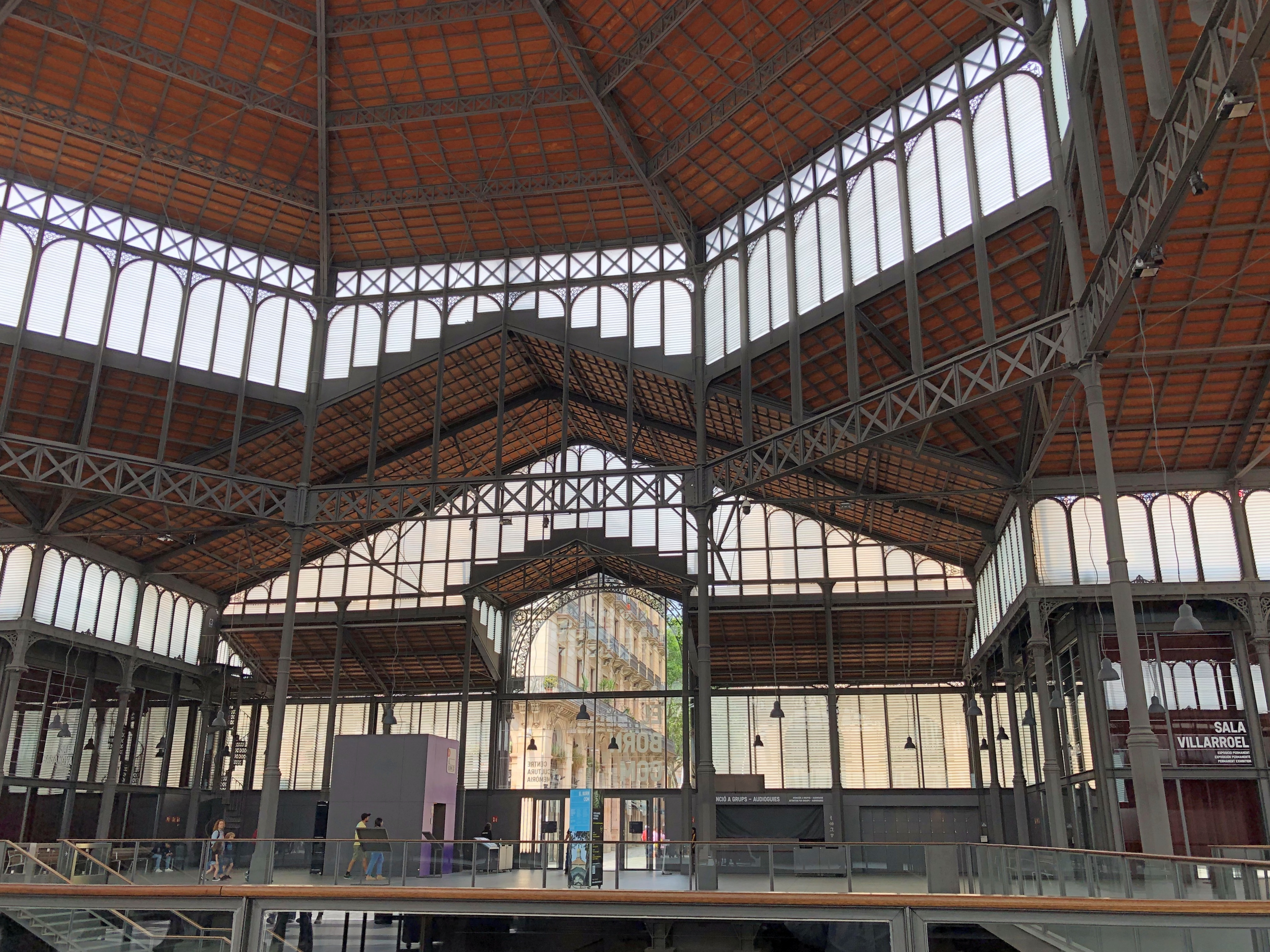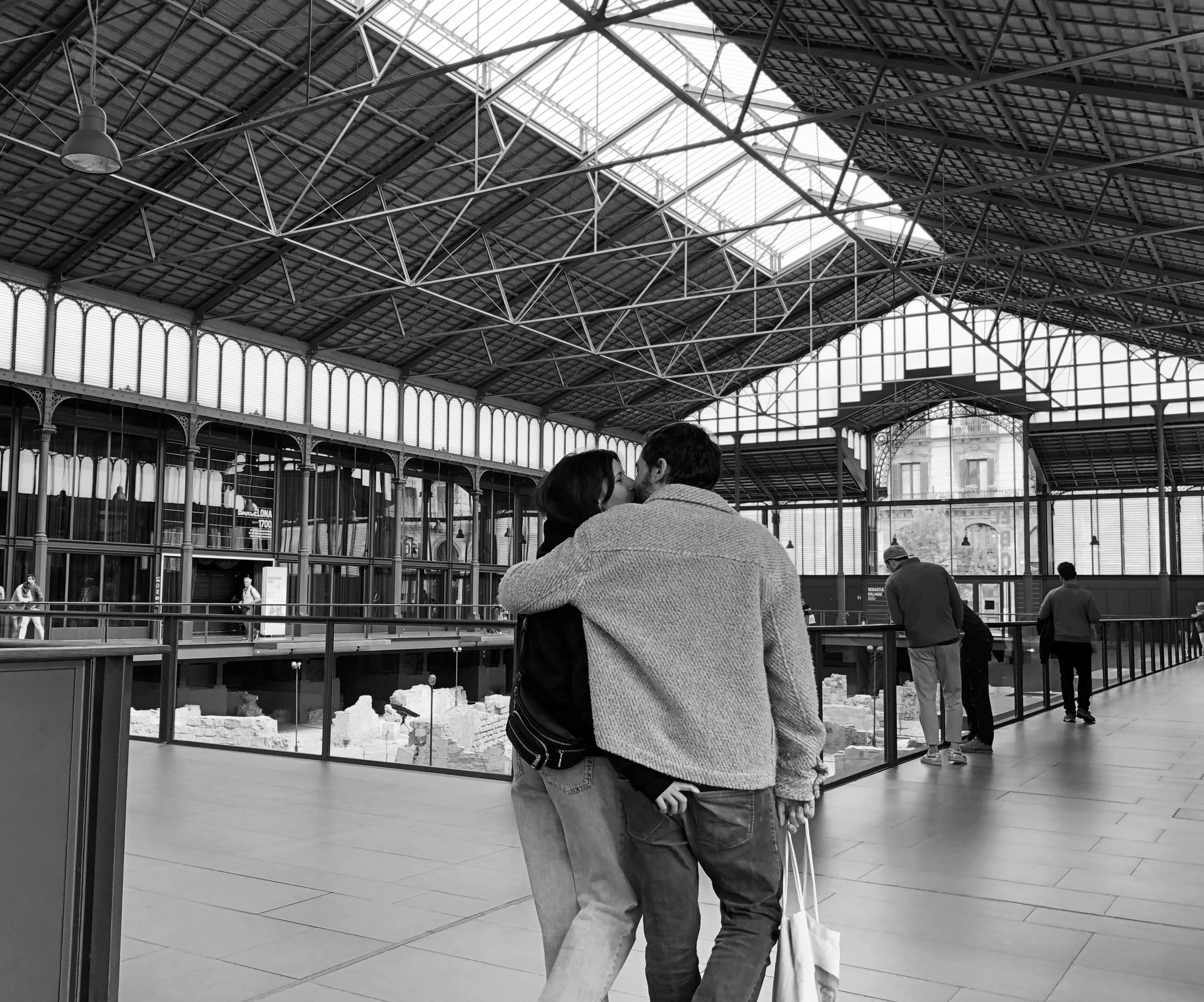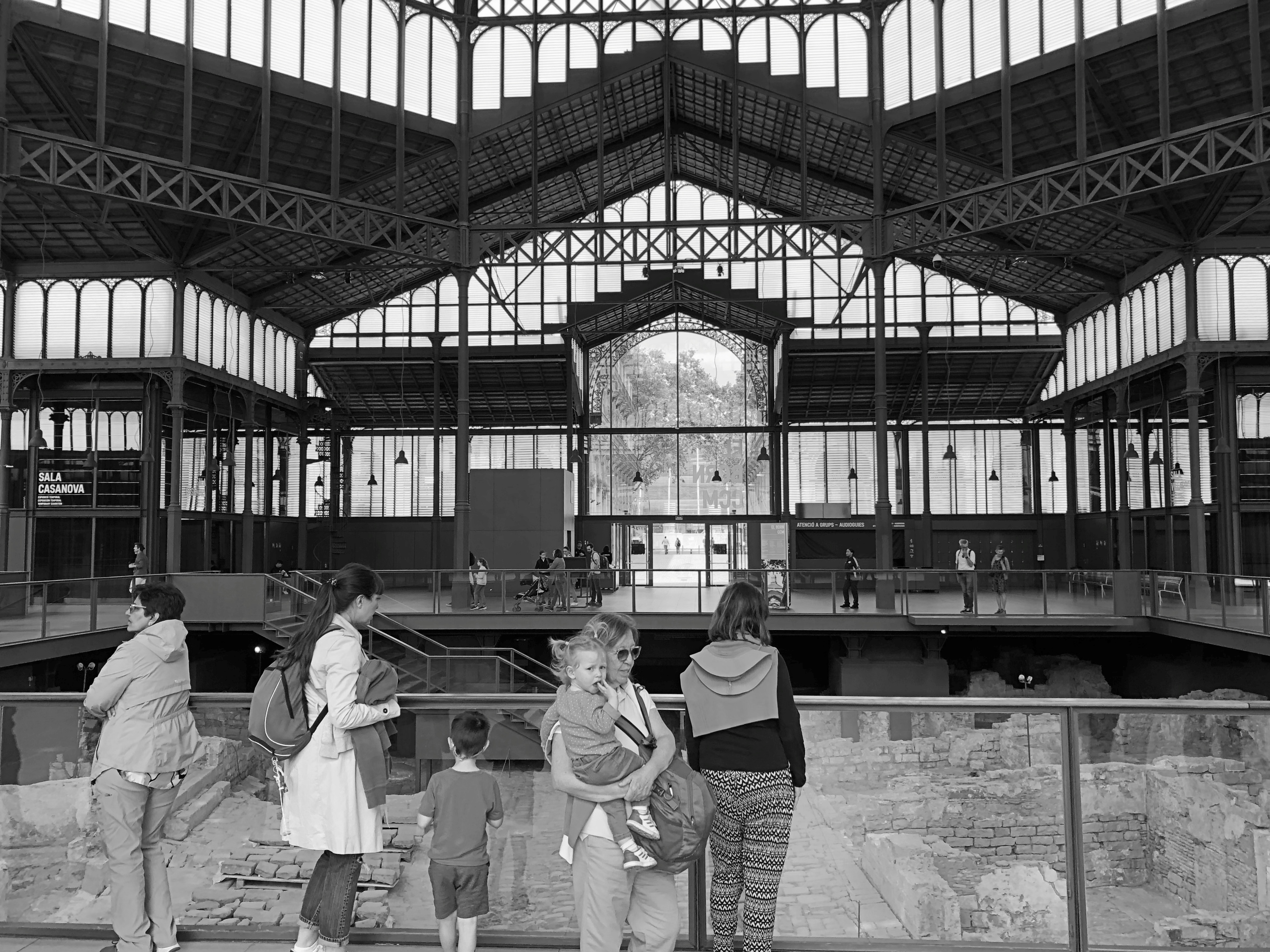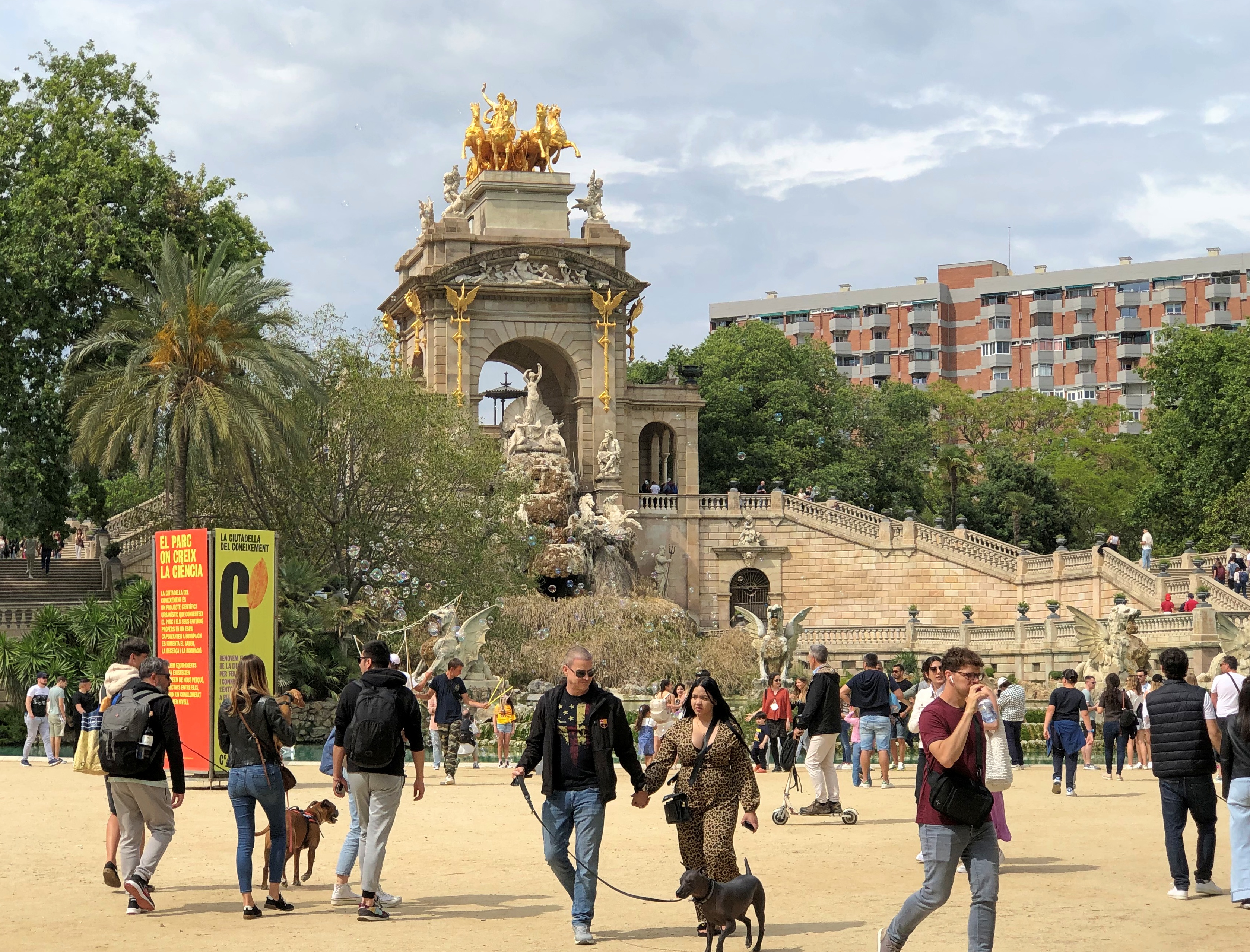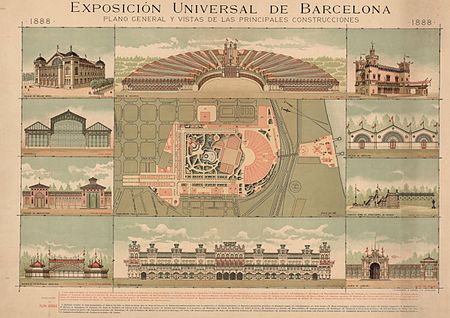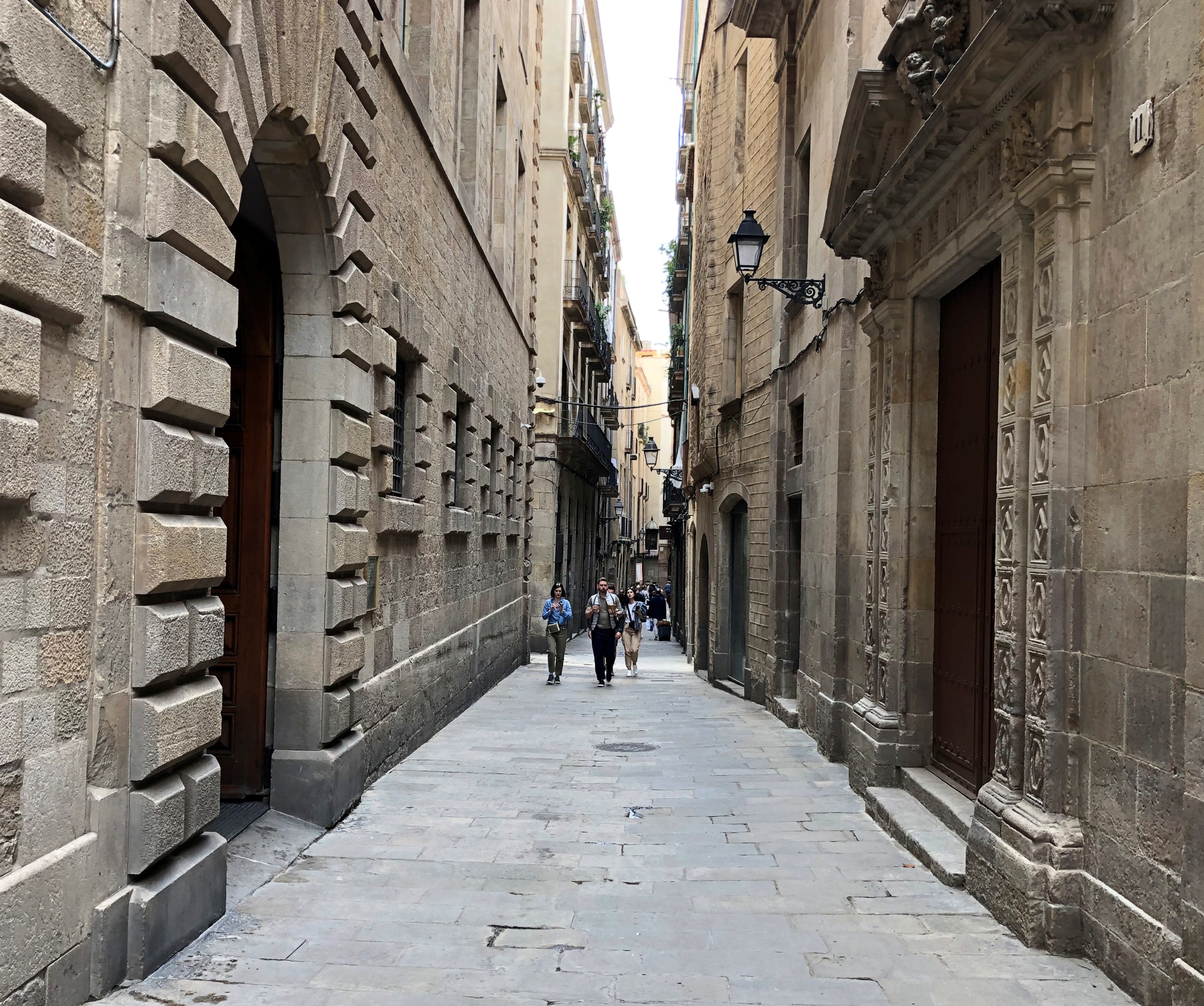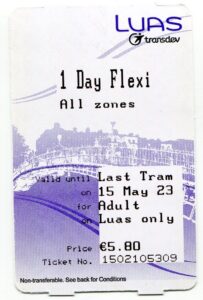Scenes from a Barcelona grocery store.
Wasn’t a very big one. One of the many 24/7 jobs in the Eixample district.
I like that brand name, Fiesta Brava. Best to translate, Wild Party? Could be. Of course, the store had much more than sangria and boxed wine. Prices might be comparable, but I’d say the few we visited were a cut above U.S. convenience stores in selection.
I’ve read that sangria is considered a drink for tourists, but I have to wonder. I expect it’s mostly Catalans visiting these grocery stores and availing themselves of those rows of sangria bottles.
This is the entry at enciclopedia.cat about one Berenguer de Montagut, machine (Google) translated from Catalan.
Master of works
He worked preferentially in Manresa, where the New Bridge project is attributed to him (1318?); in 1322 he directed the works of the Carmelite convent and from 1328 he was master major of the seat. In Barcelona he contracted, with R. Despuig, the project of the church of Santa Maria del Mar (1329). Later, with Pere Baró, he began the construction of the sanctuary of Santa Maria de Lledó.
I find it astonishing that even the name of the man who – designed – oversaw construction – both, probably – of such an edifice as the basilica Santa Maria del Mar – is known at all. But apparently it is. Still, he didn’t do it alone.
“The neighbourhood’s inhabitants poured all their efforts into building… Santa Maria del Mar, successfully completing it in only 55 years,” says a surprisingly well-written item on the basilica, published in English by a Barceló Hotel Group, of all entities, which also notes that Santa Maria del Mar has been featured in recent novels, and a Netflix series.
“Although this monumental work was overseen by Berenguer de Montagut and Ramon Despuig, the real credit must go to the residents of La Ribera [the surrounding neighborhood] and, in particular, the bastaixos — in other words, those who carried on their own backs the stone from which the basilica was built. The stone had been brought from the royal quarry, located on the Hill of Montjuïc and transported by boat to the vicinity of the church.”
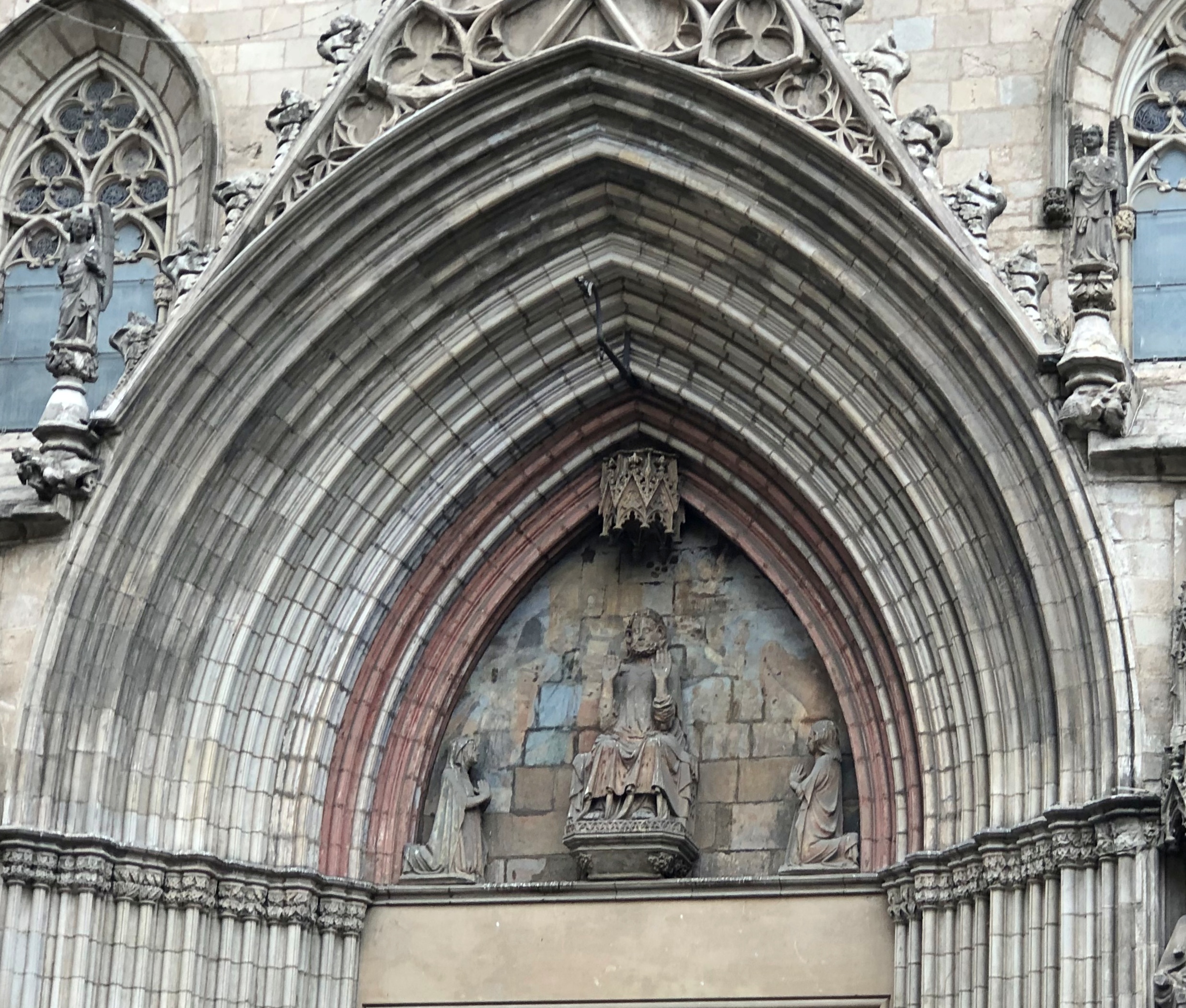

That’s the entrance, but for tourists (as opposed to parishioners), it was the exit. We entered from behind the sanctuary. 

But soon enough, the vault appears overhead.
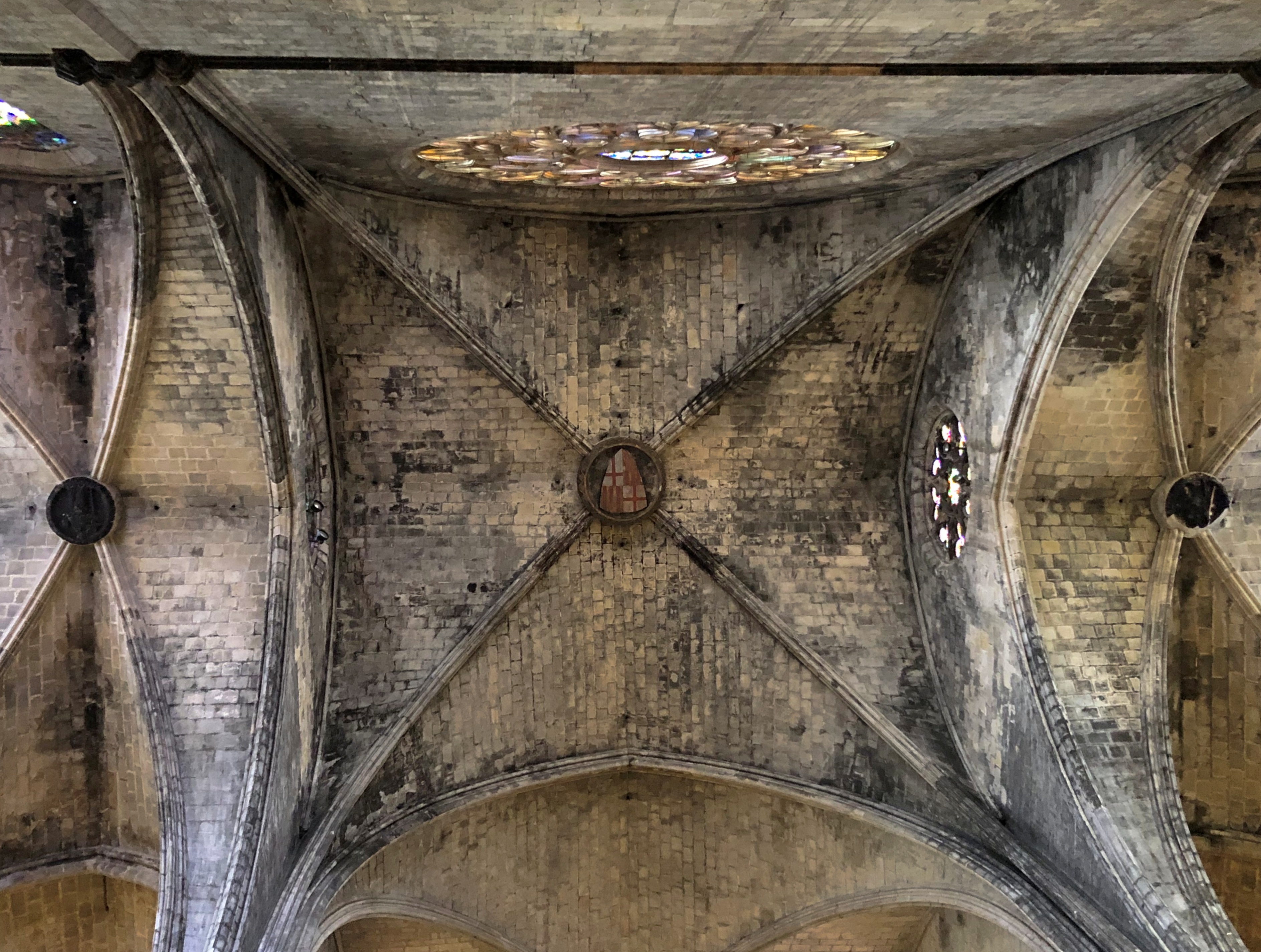
The chapels aren’t closed off.
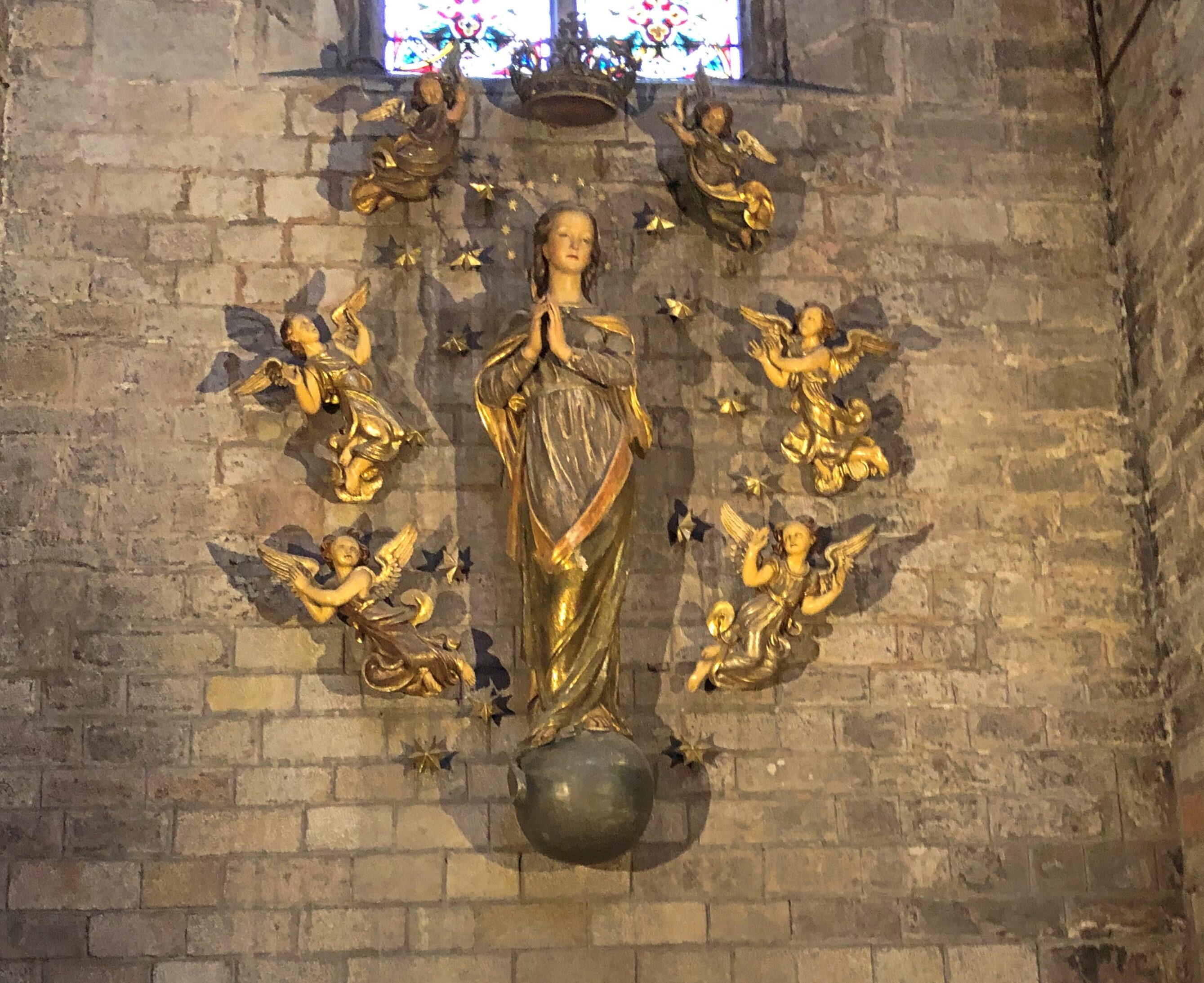
The basilica has stood since the 14th century. It abides. Considering the vicissitudes of Barcelonan history, quite a feat. Another line from EB (1929) on Barcelona, on the political violence of the modern period: “ [E]specially serious were the uprisings of 1835, when 11 convents were destroyed, and of the “tragic week” in 1909, when over 60 churches and religious buildings disappeared from the city’s architectural heritage.”
And of course, 1929 Barcelona was completely unaware of other things to come, and soon.
Translated from the basilica’s web site: “One of the most important defeats [sic, incidents] took place at the beginning of the Spanish Civil War, when the basilica burned down [sic, was seriously damaged] after a group of anarchists caused a fire there. Part of the baroque altar, some of the stained glass, numerous elements of furniture and an important part of the archives disappeared under the flames.”
Also worth mentioning: the 14th century was one of the prosperous periods in the city’s history, as a port doing well on trade from around the Mediterranean. Just the sort of place to set your historical fiction.
If I went to a modern headstone maker and asked for this design, would he or she do it? I wonder, but I’m also certain I’d never actually do that.








